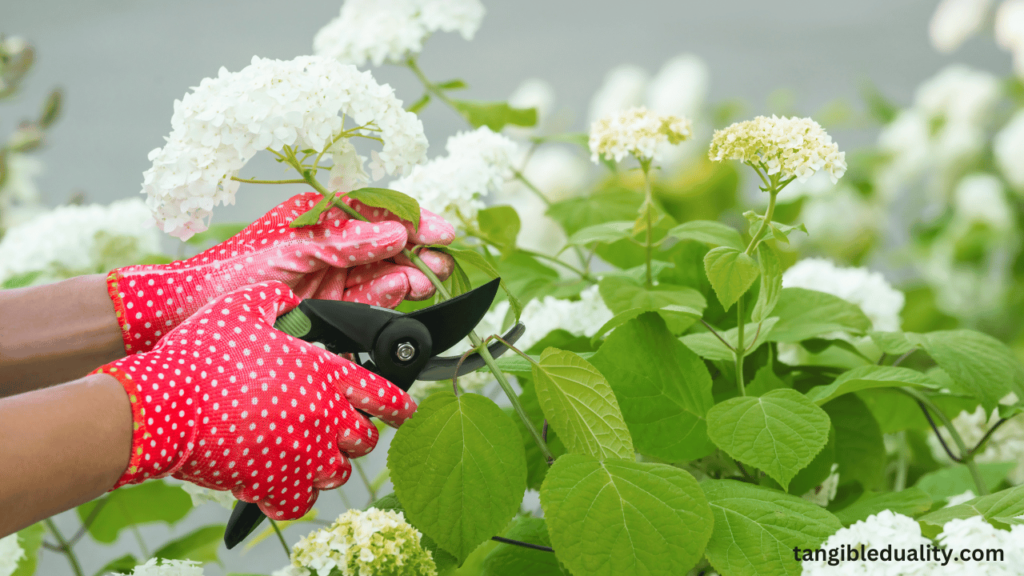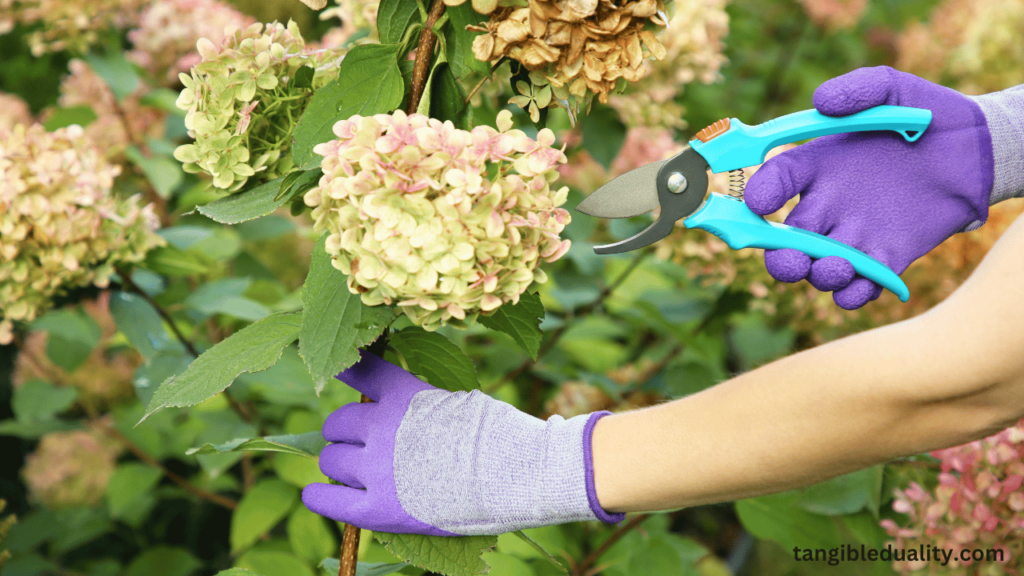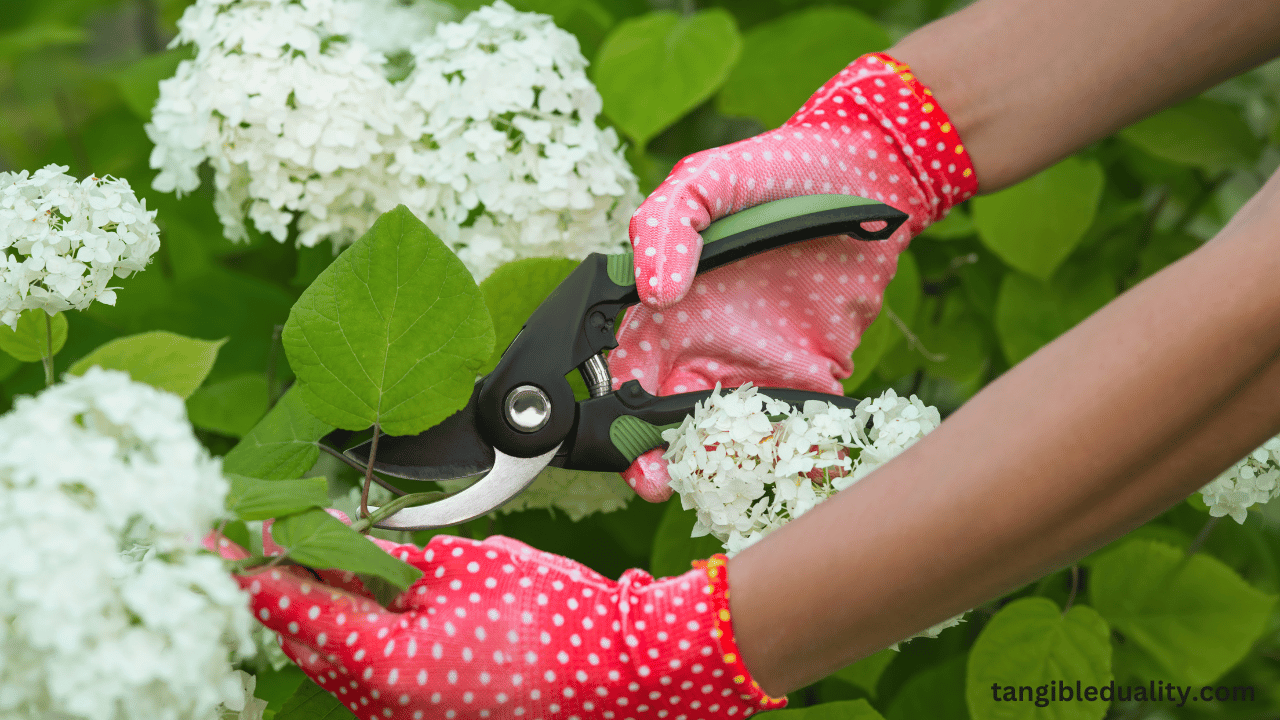As the winter frost thaws and the sun begins to shine brighter, gardeners eagerly anticipate the arrival of spring—a season of renewal and growth. Among the many tasks that beckon garden enthusiasts, pruning back hydrangea bushes stands as a cornerstone of springtime horticulture.
Hydrangeas, with their captivating blooms and verdant foliage, are quintessential garden favorites. However, to ensure their health and vitality, understanding the intricacies of spring pruning is essential.
In this comprehensive guide, we will embark on a journey through the art of trimming back hydrangea bushes in spring, offering detailed insights and expert tips to empower you in this essential gardening endeavor.

Understanding Hydrangeas
Before delving into the pruning process, it is imperative to grasp the fundamentals of hydrangea anatomy and growth patterns.
Hydrangeas belong to the Hydrangeaceae family and encompass various species and cultivars, each possessing unique characteristics and pruning requirements.
Among the most commonly cultivated species are the mophead hydrangea (Hydrangea macrophylla), lace cap hydrangea (Hydrangea macrophylla normalis), oakleaf hydrangea (Hydrangea quercifolia), and panicle hydrangea (Hydrangea paniculata).
Why Prune Hydrangeas in Spring
Pruning hydrangeas in spring serves multifaceted purposes essential for their overall well-being and aesthetic appeal. Firstly, spring pruning facilitates the removal of dead, diseased, or damaged branches, fostering a healthier growing environment by eliminating potential sources of infection and infestation.
Additionally, pruning encourages vigorous new growth and abundant flowering by stimulating dormant buds and promoting airflow and sunlight penetration within the shrub’s canopy. Furthermore, shaping the hydrangea through strategic pruning allows gardeners to sculpt its form, creating visually pleasing landscapes that harmonize with their surroundings.
Step-by-Step Guide to Trimming Back a Hydrangea Bush in Spring
Assess the Plant: Commence the pruning process by conducting a thorough assessment of the hydrangea bush. Carefully inspect the branches, foliage, and overall health of the plant, identifying any signs of damage, disease, or overcrowding. Note the presence of dead or decaying wood, as well as any crossing or congested branches that may impede airflow and light penetration.
Select the Right Tools: Equipping yourself with the appropriate tools is paramount to achieving precise and effective pruning results. Opt for high-quality pruning shears or loppers suited to the size and density of the branches you will be cutting. Ensure that your tools are sharp, clean, and sanitized to minimize the risk of introducing pathogens to the plant.
Timing Is Crucial: Timing plays a pivotal role in successful hydrangea pruning, with spring emerging as the optimal season for this task in most regions. Aim to prune your hydrangea bushes in early spring, ideally after the threat of frost has subsided and before new growth commences. This timing allows the plant to channel its energy into producing fresh foliage and blooms without sacrificing the flowering potential of established buds.
Understand Your Hydrangea Variety: Different hydrangea species exhibit varying blooming habits, necessitating tailored pruning approaches. For example, mophead and lace cap hydrangeas bloom on old wood, meaning they develop flower buds on the previous season’s growth. To preserve these buds and ensure a bountiful display of blooms, refrain from pruning these varieties until after they have finished flowering in late spring or early summer. In contrast, panicle and smooth hydrangeas bloom on new wood, allowing for pruning in late winter or early spring before the onset of new growth.
Commence Pruning: Initiate the pruning process by addressing the most pressing concerns, such as removing dead, diseased, or damaged branches. Utilize sharp pruning shears to make clean cuts, trimming the affected branches back to healthy tissue or the base of the plant if necessary. Additionally, thin out overcrowded or crossing branches to promote airflow and light penetration, enhancing the overall health and vigor of the hydrangea bush.

Shape and Structure: As you progress with pruning, take a step back to evaluate the shape and structure of the hydrangea bush. Consider your aesthetic preferences and the plant’s natural growth habit, aiming to achieve a balanced and symmetrical form. Selectively prune branches to shape the shrub to your desired size and silhouette, ensuring that it integrates harmoniously with its surroundings.
Exercise Caution with Cuts: When pruning hydrangeas, exercise caution to avoid inadvertently removing potential flower buds or compromising the plant’s future growth. Make precise cuts just above a healthy bud or lateral branch, using clean, angled cuts to facilitate rapid healing and minimize the risk of disease transmission. Pay close attention to the orientation of the cuts, ensuring that they are made at a slight angle to prevent water accumulation and promote proper drainage.
Clean-Up and Maintenance: Upon completing the pruning process, diligently collect and dispose of all pruned branches and debris, preventing the accumulation of potential breeding grounds for pests and pathogens. Consider incorporating the organic material into compost bins or green waste recycling programs to minimize environmental impact.
Following clean-up, apply a layer of organic mulch around the base of the hydrangea bush to conserve soil moisture, suppress weed growth, and insulate the roots against temperature fluctuations. Additionally, consider fertilizing the shrub with a balanced, slow-release fertilizer to provide essential nutrients for robust growth and blooming.
Conclusion
Mastering the art of pruning back hydrangea bushes in spring allows gardeners to embark on a journey of nurturing and stewardship, fostering the health, beauty, and vitality of these beloved ornamental shrubs.
By understanding the unique characteristics of hydrangeas, adhering to proper pruning techniques, and exercising care and diligence, garden enthusiasts can cultivate thriving landscapes teeming with glorious blooms and verdant foliage.
May this comprehensive guide serve as a beacon of knowledge and inspiration, empowering you to embark on your pruning journey with confidence and proficiency. Happy gardening!
FAQs
Q: When is the best time to prune hydrangeas?
A: The timing of pruning depends on the type of hydrangea. For varieties that bloom on old wood (such as mophead and lacecap hydrangeas), it’s best to prune immediately after flowering in late spring or early summer. For types that bloom on new wood (like panicle and smooth hydrangeas), pruning can be done in late winter or early spring before new growth begins.
Q: How much should I prune my hydrangea bushes?
A: The amount of pruning depends on the specific needs of the plant. Generally, you should aim to remove dead, damaged, or diseased branches, as well as any crossing or overcrowded growth. Additionally, you can selectively prune to shape the bush and encourage optimal airflow and sunlight penetration.
Q: Can I prune my hydrangeas if they haven’t bloomed yet?
A: It’s generally recommended to wait until after the hydrangeas have finished blooming before pruning, especially for varieties that bloom on old wood. Pruning before flowering can remove potential flower buds and diminish the blooming potential for the current season.
Q: What tools do I need for pruning hydrangeas?
A: Essential tools for pruning hydrangeas include sharp pruning shears or loppers suited to the size and density of the branches you’ll be cutting. It’s important to use clean and sanitized tools to minimize the risk of spreading diseases.
Q: How can I rejuvenate an overgrown hydrangea bush?
A: If your hydrangea bush has become overgrown or leggy, you can rejuvenate it by selectively pruning out the oldest, thickest stems to encourage new growth from the base of the plant. This process, known as rejuvenation pruning, should be done gradually over a few years to avoid shocking the plant.
Q: Can I prune my hydrangeas to change their shape?
A: Yes, hydrangeas can be pruned to alter their shape and size. You can selectively prune branches to achieve the desired form, whether it’s a compact shrub or a more open and airy structure. Just be mindful of the plant’s natural growth habits and avoid excessive pruning that could compromise its health.
Q: How can I prevent my hydrangeas from becoming leggy?
A: To prevent hydrangeas from becoming leggy, it’s important to provide adequate sunlight, water, and nutrients. Regular pruning to remove weak or overcrowded growth can also help maintain a more compact and bushy appearance. Additionally, spacing hydrangea plants properly and avoiding overcrowding can promote healthier growth.

